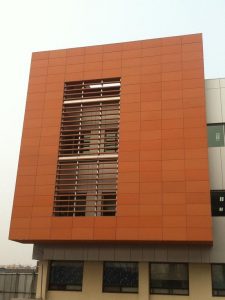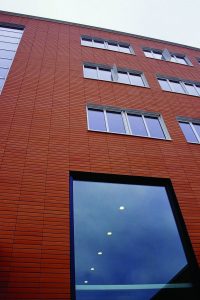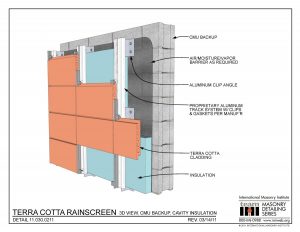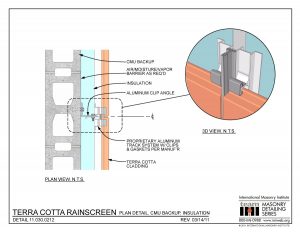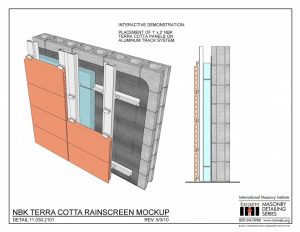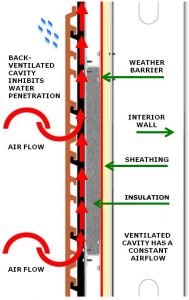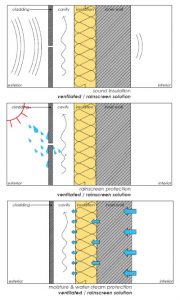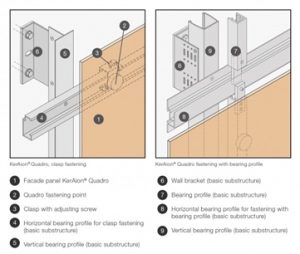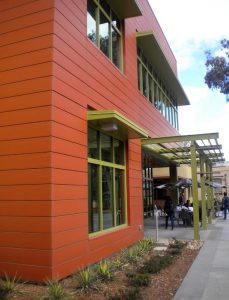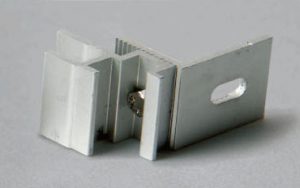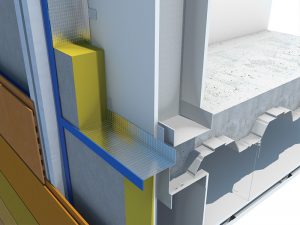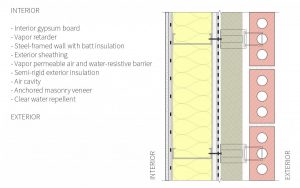A rain screen primary function is not to provide barrier protection against water penetration (such as a weather-resistant barrier does). Rather, a rain screen is designed to limit the amount of water that could potentially come into contact with the primary building envelope moisture barrier, thereby reducing chance of water finding a way into the wall assembly.an exterior wall where the cladding stands off from the moisture resistance surface of an air barrier applied to the sheathing (sheeting) to create a capillary break and to allow drainage and evaporation. The rain screen is the siding itself but the term rain screen implies a system of building. Ideally the rain screen prevents the wall air/moisture barrier on sheathing from getting wet. In some cases a rain screen wall is called a pressure-equalized rain screen wall where the ventilation openings are large enough for the air pressure to nearly equalize on both sides of the rain screen,but this name has been criticized as being redundant and is only useful to scientists and engineers.
Details:
Pros:
- Rain screen are light weight and easy to install.
- It could be replace.
- Eliminates mold and mildew from the interior wall.
- Improve material durability.
- Better energy performance.
Sources:
s: http://www.claddingcorp.com/sites/default/files/UC-Davis-0311_47-590w.jpg
http://imiweb.org/11-030-0211-terra-cotta-rainscreen-3d-view-cmu-backup-insulation/
https://www.constructionspecifier.com/weep-now-or-weep-later-moisture-management-and-risk-zones-for-masonry/
https://en.wikipedia.org/wiki/Rainscreen
http://nationalenclosure.com/systems-1/rainscreen-systems/stone-rainscreen-systems/
https://www.avenerecladding.com/why-neacera/rainscreen/rainscreen-principles/
http://www.columbia.edu/cu/gsapp/BT/EEI/AIR-H2O/air-h2o.html
